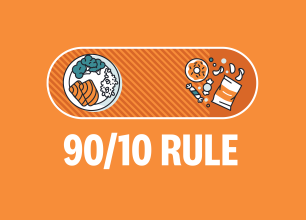The following article offers a brief summary of the 2024 updates to remote monitoring CPT codes & reimbursements. For more information on remote patient monitoring for orthopedics, request access to Prescribe FIT’s white paper at https://www.prescribefit.com/rpm-ortho-guide/
Each year, the Centers for Medicare & Medicaid Services (CMS) releases a Final Rule containing updates to the physician fee schedule (PFS): a comprehensive list of standardized fees used by CMS to reimburse doctors and other providers for their services to patients.
Each reimbursable service is assigned a corresponding Current Procedural Terminology (CPT) code to streamline reporting and billing. Remote monitoring is a digital solution that provides real-time biometric, health, and lifestyle data to providers. Remote Patient Monitoring Technology has two primary categories: Remote Physiologic Monitoring (RPM) and Remote Therapeutic Monitoring (RTM).
2024 RPM CPT Codes
Remote physiologic monitoring (RPM) involves the use of non-face-to-face technology to monitor and analyze physiological metrics of patients’ health such as weight loss/gain, oxygen saturation, blood oxygen levels, etc.
According to CMS rules, RPM services must meet the following criteria to qualify for reimbursement:
- The RPM service must monitor an acute care or chronic condition.
- The device used to collect and transmit data must meet the FDA definition of a medical device.
- RPM data must be collected for at least 16 out of 30 days each month.
- Data must be electronically collected and automatically uploaded to a secure location made available to the billing practitioner.
- The RPM service may be provided by auxiliary personnel under general supervision of the billing practitioner.
The five CPT codes approved for RPM, as well as their corresponding reimbursement rates, are as follows:
99453: Initial set-up & education
Remote monitoring of physiologic parameter(s) (e.g., weight, blood pressure, pulse oximetry, respiratory flow rate), initial; set-up and patient education on use of equipment.
Reimbursement: $19.65 (One-time)
99454: Transmission of data
Remote monitoring of physiologic parameter(s) (e.g., weight, blood pressure, pulse oximetry, respiratory flow rate), initial; device(s) supply with daily recording(s) or programmed alert(s) transmission, each 30 days.
Reimbursement: $46.83 (Every 30 days)
99457: Management services for initial 20 minutes
Remote physiologic monitoring treatment management services, clinical staff/physician/other qualified healthcare professional time in a calendar month requiring interactive communication with the patient/caregiver during the month; first 20 minutes.
Reimbursement: $48.14 (Monthly)
99458: Management services for each additional 20 minutes (add-on to 99457)
Remote physiologic monitoring treatment management services, clinical staff/physician/other qualified health care professional time in a calendar month requiring interactive communication with the patient/caregiver during the month; each additional 20 minutes. Note: From our billing experience and the MUE for the 99458 code that 3 units (60-minutes) is the max amount Medicare will pay and some commercial claims only paid for 2 units (40-minutes).
Reimbursement: $38.64 (Monthly)
99091: Collecting and analyzing physiologic data
Collection and interpretation of physiologic data (e.g., ECG, blood pressure, glucose monitoring) digitally stored and/or transmitted by the patient and/or caregiver to the physician or other qualified health care professional, qualified by education, training, licensure/regulation (when applicable) requiring a minimum of 30 minutes of time, each 30 days.
Reimbursement: $52.71 (Every 30 days)
*Note that the actual reimbursement rates may vary. Fees above based on the 2024 national average non-facility-based payment from CMS.
2024 RTM CPT Codes
Remote therapeutic monitoring (RTM) involves the use of medical devices to monitor non-physiological data on patient health and treatment response. In other words, rather than just collecting data, RTM measures the effectiveness of a treatment and/or the patients’ condition.
RTM technology can be used to measure respiratory system status, musculoskeletal system status, therapy adherence, and therapy response. This can include patients’ self-reported pain levels.
There are currently 5 RTM billing codes approved for Medicare payment in 2024. The codes and their 2024 reimbursement rates are:
98975: Initial setup & education
Remote Therapeutic Monitoring (e.g., respiratory system status, musculoskeletal system status, therapy adherence, therapy response); initial set-up and patient education on the use of equipment.
Reimbursement: $19.65 (One-time)
98976: Device supply for respiratory system
Remote therapeutic monitoring device(s) supply with scheduled (e.g., daily) recording(s) and/or programmed alert(s) transmission to monitor the respiratory system.
Reimbursement: $46.83 (Every 30 days)
98977: Device supply for musculoskeletal system
Remote therapeutic monitoring device(s) supply with scheduled (e.g., daily) recording(s) and/or programmed alert(s) transmission to monitor the musculoskeletal system.
Reimbursement: $46.83 (Every 30 days)
98980: Management services for initial 20 minutes
Remote Therapeutic Monitoring treatment management services, physician/other qualified health care professional time in a calendar month requiring at least one interactive communication with the patient/caregiver during the calendar month; first 20 minutes
Reimbursement: $49.78 (Monthly)
98981: Management services for each additional 20 minutes (add-on to 98980)
Remote therapeutic monitoring treatment management services, physician/other qualified health care professional time in a calendar month requiring at least one interactive communication with the patient/caregiver during the calendar month.
Reimbursement: $39.30 (Monthly)
*Note that the actual reimbursement rates may vary. Fees above based on the 2024 national average non-facility-based payment from CMS.
Other Changes in 2024
In the recent regulations, CMS clarified some points about remote physiologic monitoring (RPM) and remote therapeutic monitoring (RTM) services.
16 Days of Data Collection: They reinstated the rule that data needs to be collected for at least 16 days in a 30-day period for remote monitoring services after the Public Health Emergency (PHE) expired in May 2023. This rule is applicable to existing RPM and RTM code families for the calendar year 2024. In the 2024 Final Rule, CMS notes that “in the CY 2024 PFS proposed rule, we inadvertently listed all of the RTM codes (88 FR 53204) in our discussion of these services and had made a general statement about the applicability of the 16-day data collection requirement. We would like to offer clarification that the 16-day data collection requirement does not apply to CPT codes 99457, 99458, 98980, and 98981. These CPT codes are treatment management codes that account for time spent in a calendar month and do not require 16 days of data collection in a 30-day period.”
Established Patients: RPM services are once again limited to “established patients” as of May 2023. An established patient is any individual who has received any professional services, evaluation-and-management (E/M) service, or other face-to-face service (surgical procedure for example) from this provider or another provider in the same specialty and same group practice within the previous three years. While RPM services require an established patient relationship prior to billing RPM codes, RTM technically do not. CMS confirmed in the 2024 Final Rule, “RPM, not RTM, services require an established patient relationship after the end of the PHE.”
Global Periods for Surgery: For surgeries within a global period, RPM and RTM services can be provided separately if they are unrelated to the diagnosis of the surgical procedure. Providers who do not receive payment for global services can offer RPM or RTM services during the global periods for surgery.
RPM or RTM Billed by Only 1 Practitioner, only 1x per Patient: Specific CPT codes (99453, 99454 for RPM; 98976, 98977, 98980, 98981 for RTM) can only be billed by one practitioner in a 30-day period (episode of care, not a calendar month). However, other services like Chronic Care Management (CCM), Transition Care Management (TCM), Behavioral Health Integration (BHI), Principal Care Management (PCM), and Chronic Pain Management (CPM) can be billed concurrently with either RPM or RTM.
Conclusion
These updates, effective January 1, 2024, emphasize the ongoing expansion of RPM and RTM services in the United States and the increasing role of technology in healthcare delivery. With the opportunity for reimbursement, RPM and RTM can be valuable ancillary revenue services for healthcare professionals and orthopedic providers. In Prescribe FIT’s latest white paper, we “Decode the Benefits of RPM & RTM Services for Orthopedic Practices.” Visit https://www.prescribefit.com/rpm-ortho-guide/ to request access to the full report.
About Prescribe FIT
Prescribe FIT is a full-service remote monitoring solution and virtual lifestyle health coaching program designed specifically for orthopedic patients. We extend orthopedic care beyond the office by helping patients make simple changes to physical activity, nutrition, and lifestyle to address the root causes of their musculoskeletal issues and improve their overall health. Visit https://www.prescribefit.com/get-started/ to learn more.
Published on January 11, 2024

